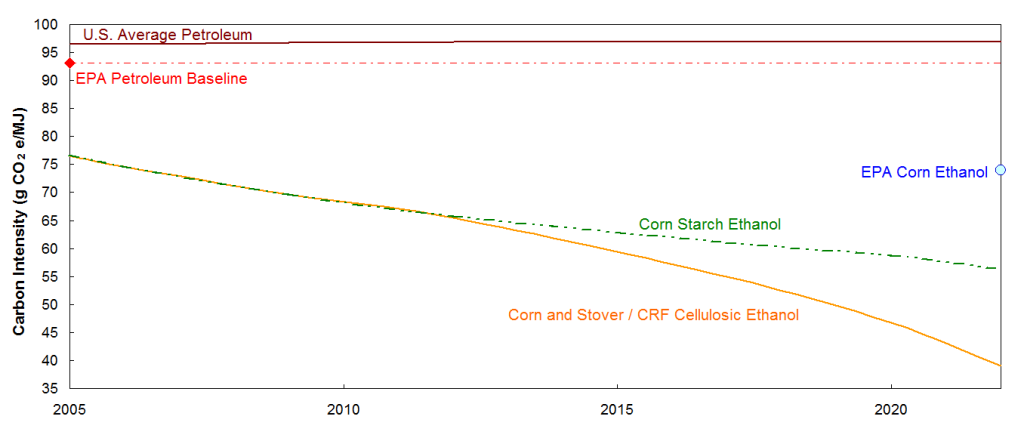Life Cycle Associates conducted a study for the Renewable Fuels Association to examine the carbon intensity of marginal petroleum and corn ethanol fuels in the U.S. and California. In a nutshell, the food benefits from corn to ethanol co-products have been increasing while new methods of petroleum production are more GHG intense. Oil producers, for example, flare most of the gas associated with oil production in Nigeria, as well as in North Dakota.
Substitution and blending of renewable fuels into petroleum gasoline is one key strategy to reduce the carbon footprint of transportation fuels. In the study, Life Cycle Associates has charted the evolving trends in GHG emissions from petroleum gasoline and corn ethanol by examining the various sources, production, and derived weighted dynamic baselines. These weighted emissions have been compared to U.S. EPA and California LCFS baseline emissions. As unconventional sources of crude oil have grown in recent years, the emissions from petroleum fuels have increased above the baseline levels initially identified in the above fuel polices. As the average emissions from petroleum are gradually increasing, the emissions from corn ethanol are declining.  The figure above shows the volume weighted emissions (g CO2 e/MJ) of U.S. petroleum gasoline and corn ethanol over time based on the historical crude oil and ethanol plant resource mixes and future projections. Corn ethanol has advanced to the stage where the 2005 to 2012 average GHG shows a 26% reduction on petroleum levels with large increases predicted in the future. Click the following link to read the entire study: Carbon Intensity of Marginal Petroleum and Corn Ethanol Fuels, by Life Cycle Associates.
The figure above shows the volume weighted emissions (g CO2 e/MJ) of U.S. petroleum gasoline and corn ethanol over time based on the historical crude oil and ethanol plant resource mixes and future projections. Corn ethanol has advanced to the stage where the 2005 to 2012 average GHG shows a 26% reduction on petroleum levels with large increases predicted in the future. Click the following link to read the entire study: Carbon Intensity of Marginal Petroleum and Corn Ethanol Fuels, by Life Cycle Associates.
To learn how Life Cycle Associates can help your organization by examining the emissions intensity of your process, request more information.
Date: January 30, 2014
